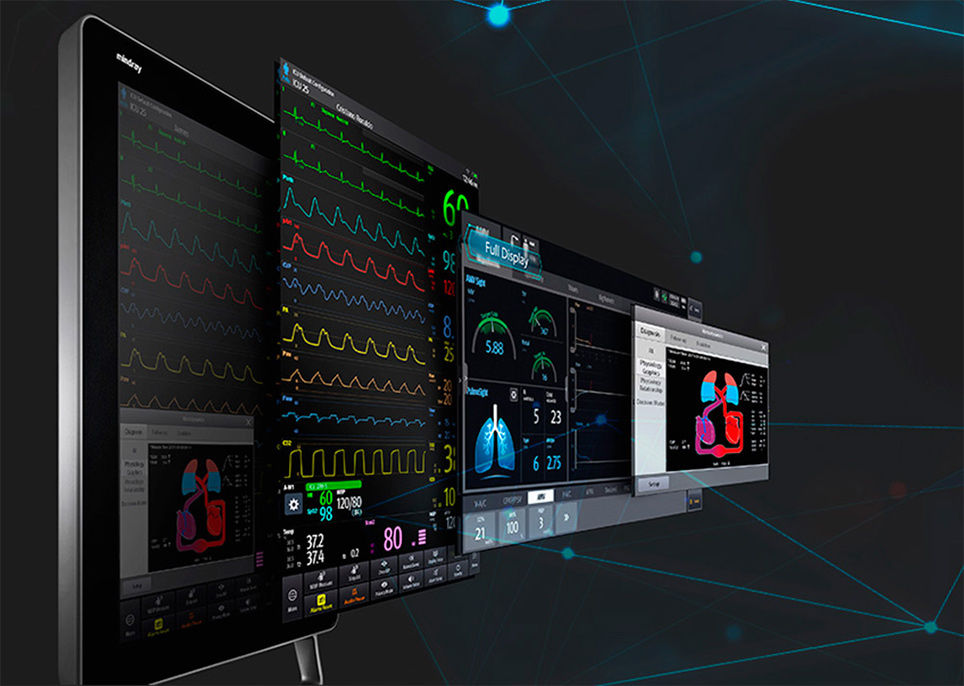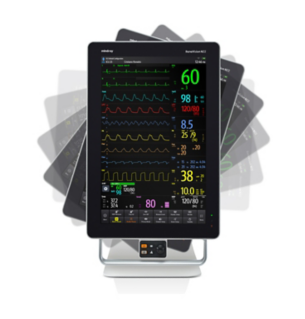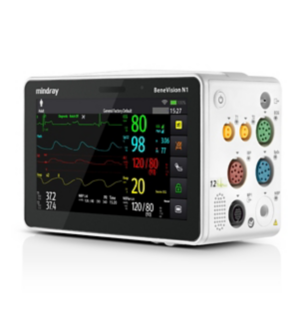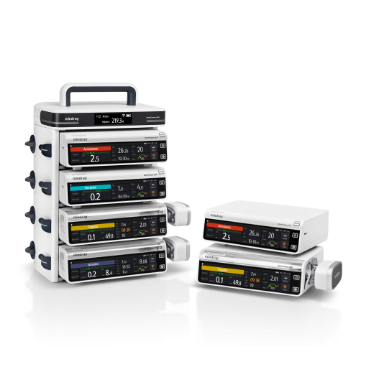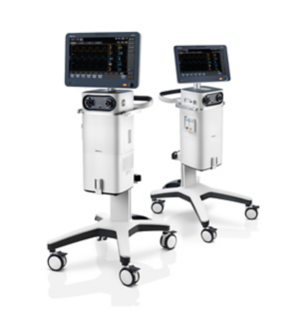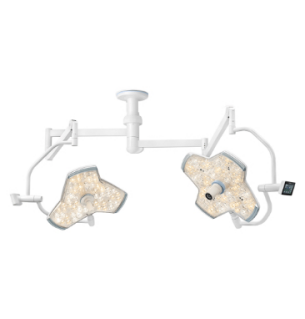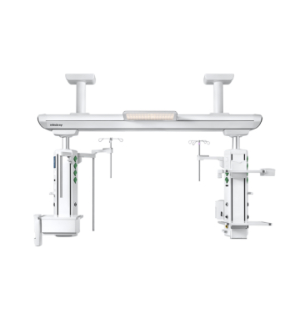A Higher Level of Data Visualization

Industrial Designer

Easier graphics for hemodynamic analysis
Hemodynamic monitoring has become a vital monitoring component, measuring patients’ blood pressure inside the veins, heart, and arteries, as well as blood flow and how much oxygen is in the blood. To collect such a large amount of information and present it in an intuitively clear way, the design team has integrated hemodynamic diagnosis, tests, follow-up, and evaluation into HemoSight, a comprehensive analysis tool. The physiology screen combines the measured values with physiological changes using a vivid physiological diagram. The physio relationship model captures the influence of parameter changes on surrounding related parameters. The decision-making model constructively helps doctors think about before- and afterload, volume reflection problems, and the trade-off between rehydration and dehydration. Mindray’s hemodynamic design in the BeneVision N Series helps medical staff see how well the heart is working in critically ill patients instantly and deliver better cardiovascular care to all patients.
Capacitive touchscreen for ease of use
To incorporate a new level of ease and speed into patient monitoring for medical professionals, Mindray’s design team delved into ICU and OR, and explored opportunities to enhance the user interface. The team observed that medical staff often needed to press buttons multiple times to get information in emergency care settings, which was time-consuming. The team introduced multi-gesture, high-definition capacitive touchscreen technology to the BeneVision N-Series to reinforce the user experience. Like a smartphone, the capacitive touchscreen has auto-brightness detection for increased contrast, an unprecedented, wide viewing angle, multi-window display capability, and can rotate for portrait or landscape viewing. The intuitive user interface significantly improves the visibility of critical data for the patient.

Speaking the language of colors
During hospital visits, the design team found small labels of various colors at the bedsides of many patients, stating their name, dosage and time of use on them. If the writing on the label is illegible, or the label falls off, or if it is misread or lacks important information, nurses on the next shift will encounter problems. This creates safety hazards, and also reduces staff efficiency. In response, the design team created a color-coded design for the infusion pump. Compared to words, bright color blocks are obviously easier to identify. Entering the content of the small labels into the smart infusion pump's system and distinguishing different drugs and their hazard levels through bright contrasting colors, can help ease the medication management burden caused by small labels, make bedsides tidier and cleaner, and enable nurses to identify drugs clearly at a glance and use them correctly, so as to minimize medication errors as far as possible.
Making breath recognizable to clinicians
In ventilation therapies, clinicians often need to evaluate changes in the patient's lung condition and adjust the setting according to the patient's needs in a limited time window. A visualized display of the patient's condition will make clinicians' work easier, increasing staff efficiency. With this in mind, Mindray's design team created PulmoSight, a quasi-physical design presenting breathing changes through dynamic changes of color depth, light, and shadow. PulmoSight utilizes numerical and graphical displays to show real-time resistance, compliance, and spontaneous breathing status. Combined with a dynamic short trend display, clinicians can monitor and evaluate changes in the patient's lung condition and adjust the setting according to their needs.
Maximizing Patient Safety

Industrial Designer

Safeguarding ventilation with ease
The ventilator is a patient monitoring device and a therapeutic one, which has a direct impact on patient safety. A relatively long training period before using it is a must-have. However, the settings and interfaces of ventilators vary from brand to brand, causing difficulties in training. After realizing these pain points, Mindray's team designed SV800 with a fully understand of the different habits and clinical scenarios of clinicians as they performed ventilation therapies for better interaction, and provided users with visual operation guidance. Besides, to prevent misoperation, we designed a consistent and intuitive user interface design logic for multiple therapy models. 90 percent operation can be conducted in one step.
Anesthetic care and safety
Most volatile, potent inhaled agents exist as a liquid at room temperature and atmospheric pressure. To maintain anesthetic agents safely and make anesthesia performance more secure, the design team has created a full range of anesthetic vaporizers for use on A-Series Anesthesia machines to support individual clinical and pharmaceutical requirements. Mindray’s vaporizers ensure a constant output and accurate concentration of anesthetic agents with their automatic flow, temperature, and pressure compensation functions.


Fast and seamless patient transfer assured
As patients are brought into the OR or ICU, healthcare providers face the challenge of transferring patient data from the device to the hospital IT system as quickly as possible. The design team recognized this challenge and sought to enhance connectivity – with a plug-and-play module. BeneVision N1, one of the smallest patient monitors in the world designed by Mindray, can be inserted into or removed from the host monitor as a module in one easy step, ensuring data continuity for patient-centric monitoring and improving the overall management of information.
Transforming Environmental Obstacles into Possibilities

Industrial Designer

A smarter way to manage ICU devices
When researching the use of medical supply units in hospitals, the design team noticed that wires and pipe fittings were wrapped around every corner to connect patients and devices. A movement by a patient may result in a wire falling, and even the monitor, causing a medical accident. To enhance cable management and improve ICU safety, the design team added a wire holder and several cable hooks between the patient and the devices. The cable storage makes the clinical environment neat and tidy, improving the efficiency of medical care. Since some hospitals have already installed floor-mounted equipment, the design team used an upturned fixed structure to provide the tabletop's vertical storage, which makes the use of bedside equipment space more efficient. The light and smooth flipping action can be done by one person, which significantly enhances equipment operation convenience.
Flowing through the lights smoothly
Surgical lights are usually operated by a nurse. At the request of the surgeon, the nurse adjusts the angle and parameters of the surgical light. Due to the obstruction of the line of sight and the angle difference, nurses cannot always maintain the lighting requirements that the doctor needs. The design team aimed to make it easier to adjust illumination and light fields to different clinical needs. Inspired by the ultra-thin shape of traditional Chinese kites, the team created lights that effectively enhance laminar gas's penetration abilities and ensure patients' safety during surgery. The intelligent shadow control technology actively monitors the position of the doctor's head, optimizes the shadow-less effect of lighting promptly, and keeps doctors focused on their patients. With a multifunctional handle featuring a unique sensor design, surgeons can quickly choose between different illumination modes, increasing efficiency during surgery.
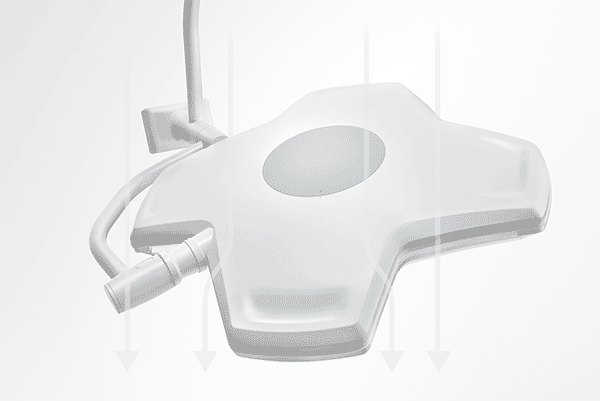

Visual consistency leads to efficiency
The design team also sought to optimize the user experience in busy clinical settings with a consistent UI and visual design. For instance, in the OR, medical professionals found it hard to switch freely between ventilators, pumps, and other devices due to operating pressure. To offer better diagnostic support, the designers created a systematic and holistic UI interaction with a unified language. By collaborating with Mindray’s R&D team, the design team ensures that all Mindray’s patient monitoring devices are consistent and integrated with software systems and IT solutions across departments.
Mindray innovation in PMLS design originates from the clinical settings in which it was imagined. In return, it provides maximum support for clinical decision-making, all while maintaining patient information continuity and speeding up workflows. Medical professionals can rest assured that our devices will always be a lifeguard for those in need.
